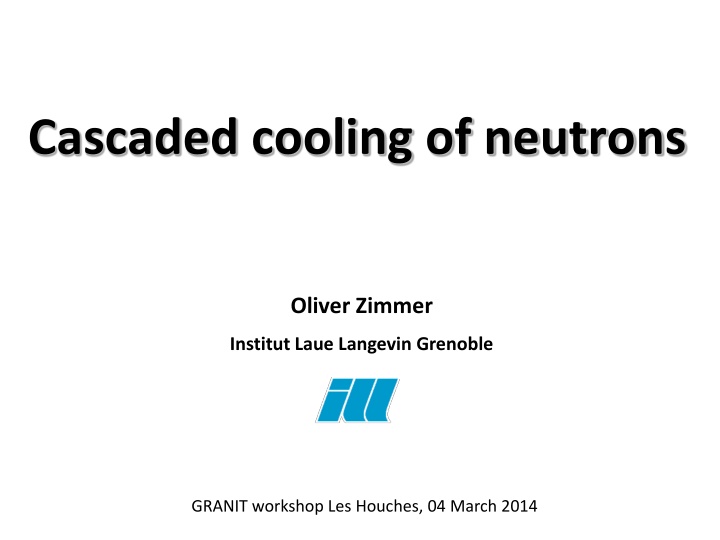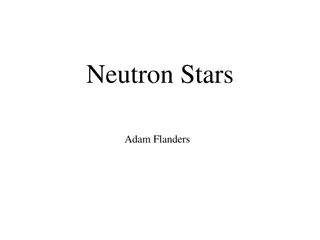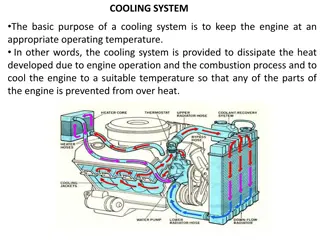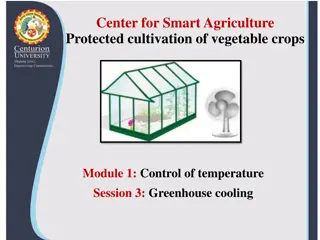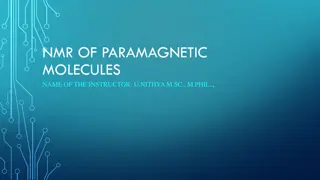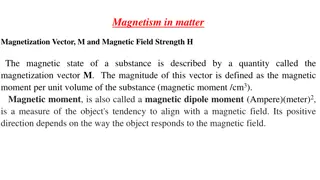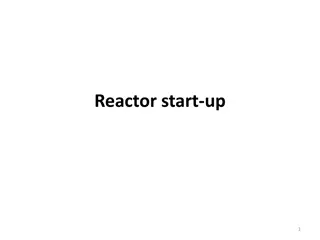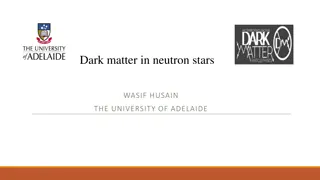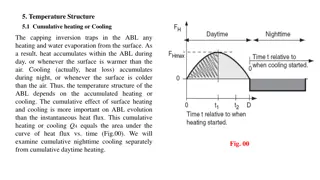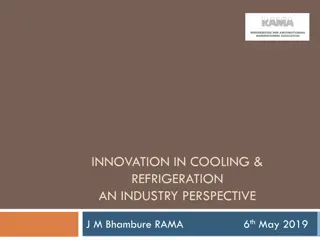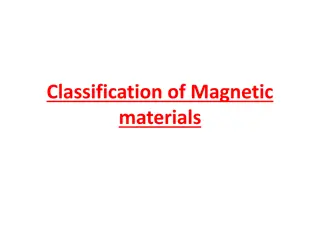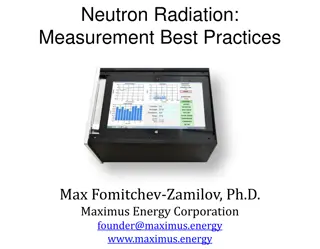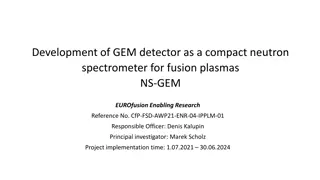Advancements in Neutron Cooling Techniques and Paramagnetic Systems
The presentation discusses cascaded cooling of neutrons and Namiot's proposal for phononless cooling to low temperatures using polarized deuterons. It explores inelastic scattering cross-sections, candidate paramagnetic systems, and excitations in O2. Additionally, it covers rate constants, superfluid helium crystals, neutron populations in paramagnetic media, and UCN production rates. The research delves into cascaded cooling with diffusive reflectors and neutron populations in a steady state within a paramagnetic medium. Lastly, it examines UCN flux traps and their dependencies on magnetic field strength and radius.
Download Presentation

Please find below an Image/Link to download the presentation.
The content on the website is provided AS IS for your information and personal use only. It may not be sold, licensed, or shared on other websites without obtaining consent from the author.If you encounter any issues during the download, it is possible that the publisher has removed the file from their server.
You are allowed to download the files provided on this website for personal or commercial use, subject to the condition that they are used lawfully. All files are the property of their respective owners.
The content on the website is provided AS IS for your information and personal use only. It may not be sold, licensed, or shared on other websites without obtaining consent from the author.
E N D
Presentation Transcript
Cascaded cooling of neutrons Oliver Zimmer Institut Laue Langevin Grenoble GRANIT workshop Les Houches, 04 March 2014
Namiots proposal (1974): phononless cooling of neutrons to extremely low temperatures Medium: fully polarized deuterons in a strong B-field neutron-deuteron spinflip scattering only in J = I state (angular momentum conservation forbids it for J = I + ) spin flip scattering reduces neutron kinetic energy by Zeeman energies of neutron and deuteron cascading of process with hf field in resonance with neutron Energy transfer per nd spin flip collision: 0.1 eV/T Zeeman energy of unpaired electron: 116 eV/T Usable for cooling?
Inelastic scattering cross section by paramagnetic system: Zeeman system: O2triplet zero-field splitting:
Candidate paramagnetic systems: Chernogolovka group: Stabilization of atoms in superfluid4He
0.4 meV excitation found for O2in two different cages:
Superfluid 4He O2-4He v.d.Waals crystal (1.5x1021/cm3, 0.49meV) O2-D2O clathrate (4.6x1021/cm3, 0.4meV) 15N-4He v.d.Waals crystal (1.5x1021/cm3, B0= 0.3T, 1T, 3T, 10T) 1E-6 UCN production rate (arb. units) 1E-7 1E-8 1E-9 1E-10 0,1 1 10 100 neutron temperature (K)
Neutron populations in paramagnetic medium in steady state Deuterium atoms, T=1K, Tn=30K, B=9T, =0.001 Neutron groups taken into account: 10, 14, 1E-5 1E-6 18, 22 1E-7 Nj (arb.units) 1E-8 1E-9 1E-10 1E-11 1E-12 0 5 10 15 20 neutron group j
UCN in flux trap: dependences on B0and R Deuterium atoms, 0.1T 0.3T 1T 3T 9T 3x10-7 UCN in flux trap (arb.units) 2x10-7 1x10-7 0 0,5 radius of diffusive D2O spheres (nm) 1,0 1,5 2,0
Advantage of dispersion-free magnetic excitation cascading with suitable energy decrement better suppression of up-scattering (no multi-phonon processes) large down-scattering cross section (energy transfer to point-like structure for long- neutrons) Single phonon emission e.g. for superfluid He: Need for further experimental and theoretical study paramagnetic densities in superfluid4He and molecular cages, EPR measurements, absolute neutron cross sections... feasibility of UCN sources based on paramagnetic scattering, taking into account all channels of energy transfer VCN/UCN production using molecule-caged O2in the ESS hole?
